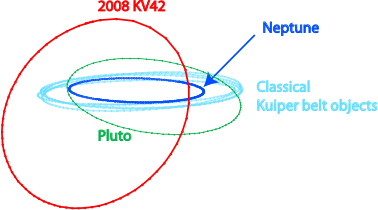
This year, 2011, marks the 100th anniversary of the American Association of Variable Star Observers (AAVSO). Despite its name, the AAVSO is a truly international organization, with members in just about every country. It's a fantastic example of collaboration between professional, semi-professional, and amateur astronomers.
The focus of the AAVSO is variable stars--a type of star whose brightness varies over time, usually in a cyclic pattern. Variable stars play an extremely important role in astronomy. Certain types of variable stars obey an interesting relationship, whereby the time it takes for them to complete a cycle of brightness changes--from dim, to bright, and back to dim again--is related to the amount of light they are emitting on average. This means that, if we can measure how long it takes a variable star to go through a brightness cycle, we can work out how bright the star is intrinsically. Knowing how bright the star is intrinsically, we can work out how far away it must be to appear as bright as it does to observers on Earth. Variable stars are often the only means we have to determine the distances to celestial objects.
Many variable stars are easily visible from Earth with a small telescope. A few are even visible to the naked eye. They are popular targets for amateur astronomers. Every year, the AAVSO collects more than half a million observations of variable stars from amateur astronomers around the world. They catalog these observations and make them available to everyone. Many of their results have been used by professional astronomers in scientific publications. Canadian astronomers are among the AAVSO's strongest supporters.
John Percy, past president of the AAVSO and Professor Emeritus at the University of Toronto, has relied on AAVSO data for years and has been instrumental in encouraging participation in AAVSO activities.
This year, the AAVSO is
celebrating 100 years of "citizen science". Among the celebratory activities is a challenge to observers the world over to observe 100 variable stars in 100 days. Some eager Canadians have
already completed the challenge. Why not try to observe a few variable stars yourself? The AAVSO publishes a
handy guide to help you get started.










